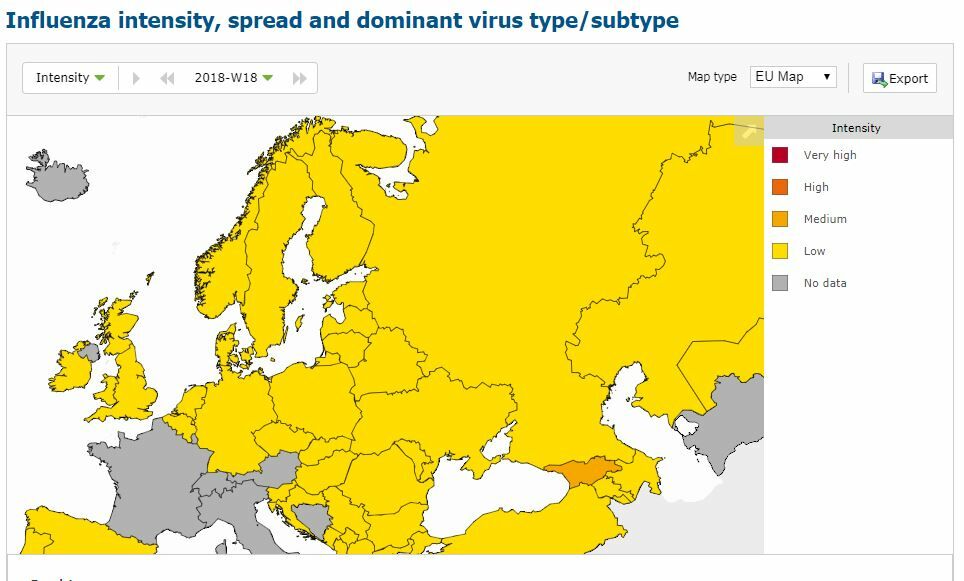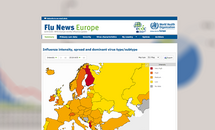Weekly influenza update, week 18, April/May 2018
In collaboration with WHO Regional Office for Europe, ECDC monitors and reports on influenza activity in Europe on a weekly basis throughout the flu season.

Download

Influenza intensity week 18, 2018
- EN - [JPG-81.83 KB]
Summary
- Influenza activity was at inter-season levels in all but one reporting country.
- 6% of the individuals sampled from primary healthcare settings tested positive for influenza viruses (compared to 11% in the previous week).
- The number of influenza virus detections has further decreased compared to previous weeks.
2017/18 season overview
- Influenza viruses circulated at high levels in the Region between weeks 52/2017 and 12/2018 (based on increased proportions - 40% and above - of sentinel specimens testing positive for influenza viruses). This is longer than in recent seasons and may have contributed to the severity of this season.
- The majority of influenza viruses detected were type B, representing a high level of circulation of influenza B viruses compared to recent seasons. B/Yamagata lineage viruses have greatly outnumbered those of the B/Victoria lineage.
- Different patterns of dominant type and A subtypes were observed between the countries of the Region.
- While low in numbers, characterized A(H3N2) viruses fell mainly in clade 3C.2a (57%) and subclade 3C.2a1 (42%), while 42% of B/Victoria lineage viruses fell in a subclade of clade 1A viruses that are antigenically distinct from the current trivalent vaccine component.
- The majority of severe cases reported this season were due to influenza virus type B infection and have mostly occurred in persons older than 15 years.
- Mortality from all causes now appears be have returned to normal expected levels in all 20 participating countries and regions that report to EuroMOMO.
- Interim results from 5 European studies indicate 25 to 52% vaccine effectiveness against any influenza.






